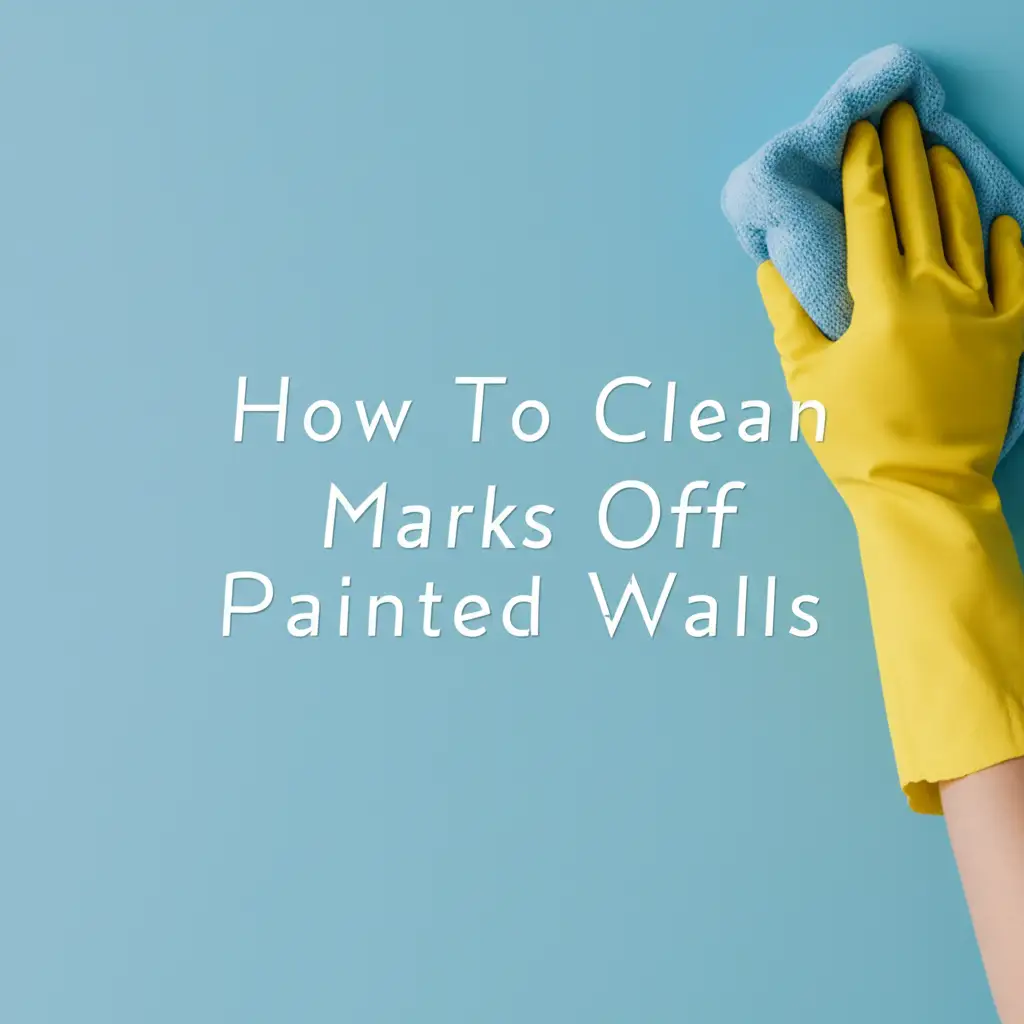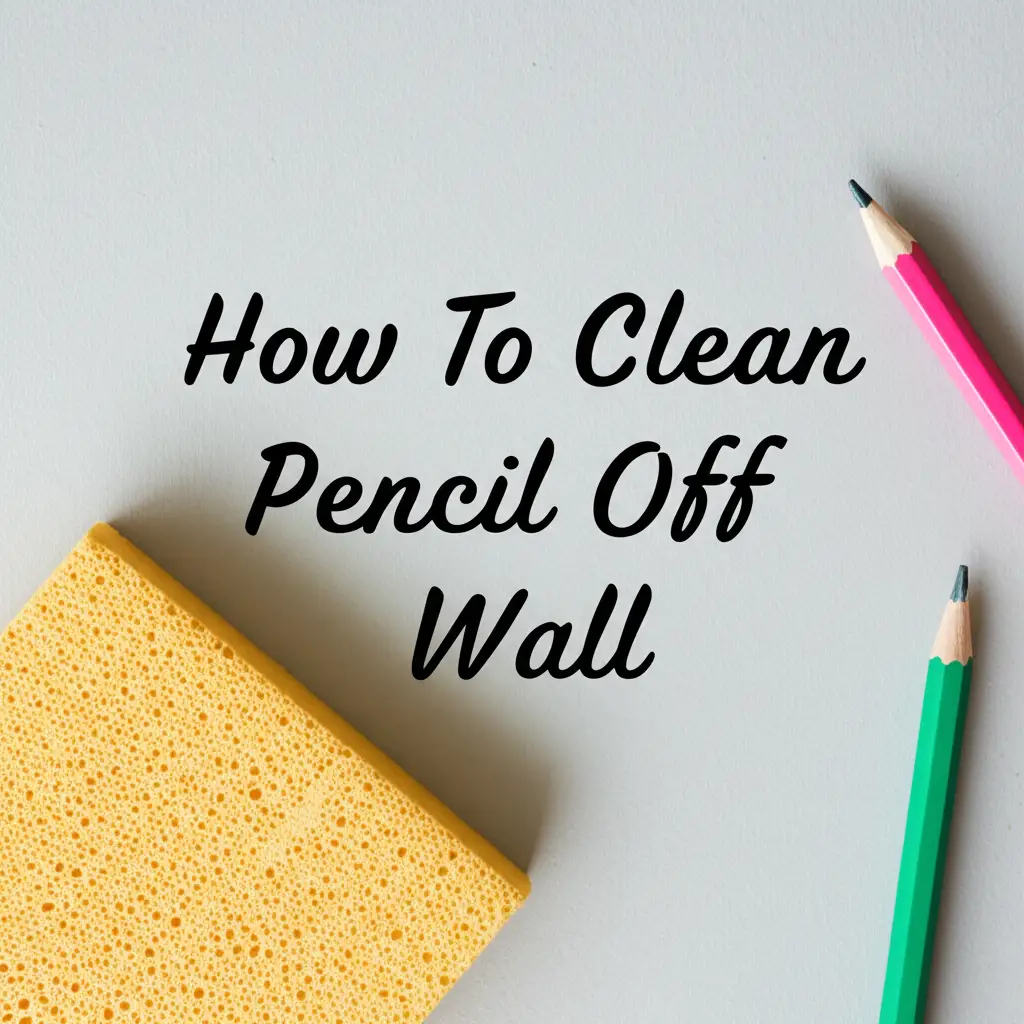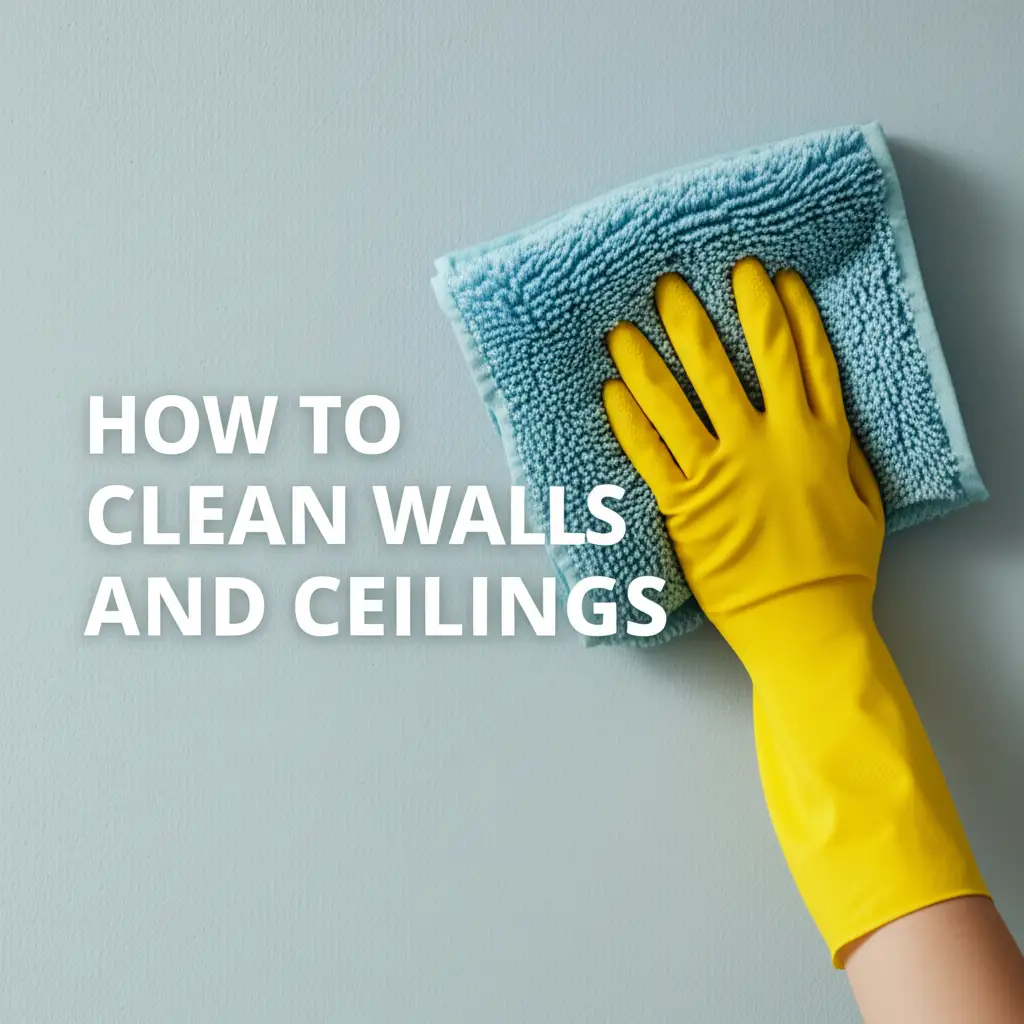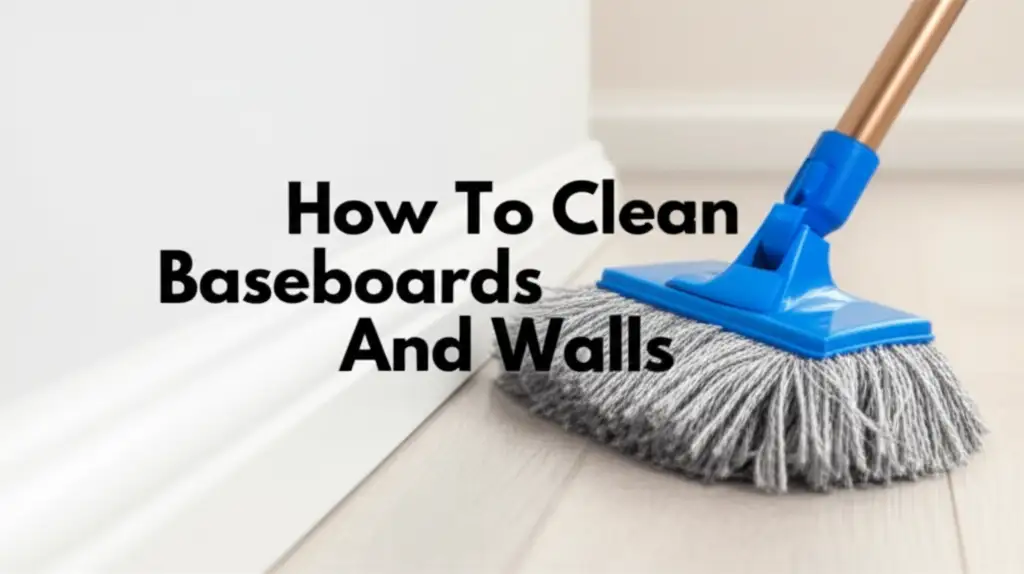· Home Cleaning · 18 min read
How To Clean Marks Off Painted Walls

How To Clean Marks Off Painted Walls
Suddenly, a noticeable mark appears on your beautifully painted wall. It can be a crayon scribble, a greasy smudge, or a dark scuff. Walls get dirty easily, especially in busy homes. Many people wonder how to remove these marks without ruining the paint.
I understand the frustration of seeing a blemish on your perfect wall. You want your home to look clean and inviting. Rest assured, cleaning marks off painted walls is possible. You just need the right approach. This guide helps you identify marks and use safe cleaning methods. We will cover tools, techniques, and specific stain solutions. You will learn how to keep your walls spotless.
Takeaway:
- Identify the type of mark and your wall’s paint finish.
- Gather necessary cleaning supplies before you begin.
- Always test any cleaning solution on an inconspicuous spot first.
- Use the gentlest cleaning method that gets the job done.
- Work from the outside of the mark towards its center to prevent spreading.
Clear and Concise Answer:
To clean marks off painted walls, first identify the mark type and paint finish. Start with gentle methods like water and mild soap, testing on a small, hidden area. For tougher stains, use targeted solutions like baking soda paste or specialized cleaners, always working carefully to avoid damaging the paint.
Understanding Your Painted Walls and the Marks
Before you attack any mark, you must know your wall. Different paint finishes react differently to cleaners. Understanding the mark’s origin also helps you choose the correct method. This knowledge protects your paint.
Many people think all paint is the same. This is not true. Flat paint is more absorbent than glossy paint. Glossy paint handles scrubbing better. Matte finishes show marks more easily but are harder to clean without leaving shine spots. Identify your paint type first.
Types of Paint Finishes
Paint finishes have distinct characteristics. Each type requires a specific level of care during cleaning. Knowing your finish helps prevent damage. This step is important for successful mark removal.
- Flat/Matte: This finish absorbs moisture. It is the least durable for cleaning. Use minimal water and very gentle wiping. Scrubbing can remove paint.
- Eggshell/Satin: These finishes have a slight sheen. They are more durable than flat paint. You can gently wipe them with a damp cloth. They resist stains better.
- Semi-Gloss/Gloss: These are the most durable finishes. They are easy to clean. You can wipe them down with more pressure. They work well in high-traffic areas like kitchens and bathrooms.
Common Wall Marks You Might Find
Marks on walls appear in many forms. Each type needs a specific cleaning approach. Knowing what caused the mark guides your choice of cleaner. You can then select the most effective solution.
- Scuff Marks: These are black or grey streaks. They happen when objects rub against the wall. Shoes or furniture often cause them.
- Crayon/Pencil Marks: Children often leave these marks. Crayon is waxy. Pencil is graphite.
- Grease/Oil Stains: Cooking splatters or greasy hands cause these. They are common in kitchens. They can be hard to remove.
- Ink/Marker Stains: Pens, markers, and highlighters leave these. They penetrate paint quickly. Act fast for the best results.
- Dirt/Grime: Everyday dust and handprints create general dirt. These marks are often light but widespread. They accumulate over time.
Essential Tools and Supplies for Wall Cleaning
Having the right tools makes cleaning marks easier. You avoid frustration and save time. Gathering your supplies before you start prevents interruptions. This preparation ensures a smooth cleaning process. I always recommend having these items ready.
You do not need many specialized tools. Most items are common household products. They are often sitting in your pantry or cleaning cupboard. Make sure your cloths are clean. Dirty cloths can spread grime or leave new marks.
Basic Cleaning Arsenal
These items form the core of your wall cleaning kit. They are safe for most painted surfaces. Use them for general dirt and light scuffs. Always start with the gentlest options.
- Soft cloths or sponges: Microfiber cloths work best. They are absorbent and non-abrasive. Avoid rough scrubbers.
- Warm water: Plain water often removes many fresh marks. It is the safest option.
- Mild dish soap: A small amount of dish soap adds cleaning power. It cuts through light grease. Use only a few drops.
- Spray bottle: This helps apply cleaning solutions evenly. It prevents over-saturating the wall.
- Bucket: Use for rinsing cloths. Keep one for clean water and one for dirty water.
Specialized Cleaners for Tough Stains
Sometimes basic tools are not enough. You might need something stronger for stubborn marks. These cleaners target specific types of stains. Use them cautiously and always test first.
- Baking soda: This acts as a gentle abrasive. Mix it with water to form a paste. It is effective on crayon and scuff marks.
- Rubbing alcohol: This works on ink and permanent marker. Apply it with a cotton swab. Be very careful with paint.
- White vinegar: A diluted vinegar solution cuts through grease and grime. It is a natural disinfectant. It helps with smoke stains too. You can learn more about how to use it effectively in cleaning by checking out our guide on how to clean with vinegar and baking soda.
- Magic Eraser (melamine foam): This is highly effective on scuffs and crayon. Use it gently. It acts like fine sandpaper. It can remove paint if scrubbed too hard.
- Commercial wall cleaner: Choose a product specifically designed for painted walls. Follow label instructions carefully.
The Golden Rule: Always Test First
You must always test your cleaning method. This is the most important step in protecting your paint. Skipping this step can lead to irreversible damage. A small test spot saves you from big mistakes.
Testing helps you see how the paint reacts. Some paints might streak. Others might lose their sheen. You want to avoid removing paint or changing its appearance. Find an area that is not noticeable.
I always test cleaners on a hidden spot. The back of a door works well. You can also use a closet interior. A small corner near the baseboard is another option. Apply a tiny amount of your chosen cleaner.
Wait a few minutes after applying the cleaner. Let it sit and see if it causes discoloration. Gently wipe it away. Check for color loss or dullness. If the paint looks fine, proceed with confidence. If you see any negative changes, stop. You need a different, gentler approach. This simple step prevents paint damage.
General Techniques for Light Marks and Scuffs
For everyday dirt and light marks, a gentle approach often works best. You do not need harsh chemicals for simple blemishes. Using mild solutions protects your paint finish. This method prevents damage and leaves your walls looking fresh.
Many common marks disappear with basic cleaning. Fingerprints, light scuffs, and dust buildup are good candidates. Start with the least aggressive method. You can always escalate if needed. Remember, patience is key here.
Using Water and Mild Soap
This is your first line of defense against most wall marks. It is gentle, safe, and usually effective. Warm water helps lift dirt. Mild dish soap provides cleaning power. I find this method works wonders for light grime.
- Prepare the solution: Fill a bucket with warm water. Add a few drops of mild dish soap. Stir until it is slightly sudsy. Do not use too much soap.
- Dampen your cloth: Dip a soft microfiber cloth into the solution. Wring it out thoroughly. The cloth should be damp, not dripping wet. Excess water can damage drywall.
- Wipe the mark: Gently wipe the mark. Work from the outside edges towards the center. This stops the mark from spreading. Use light pressure.
- Rinse the area: Use a second clean cloth. Dampen it with plain water and wring it out well. Wipe the area to remove soap residue.
- Dry the wall: Lightly blot the area dry with a dry cloth. This prevents water spots and streaks. For general wall cleaning, ensuring no streaks are left behind is crucial. You can find more tips on this in our guide on how to clean painted walls without leaving streaks.
The Magic Eraser Method (with Caution)
A Magic Eraser, or melamine foam, is incredibly effective. It works like a very fine abrasive. It can lift many stubborn marks. However, it requires extreme caution on painted surfaces. It can remove paint if used too aggressively.
- Dampen the eraser: Wet the Magic Eraser lightly with water. Squeeze out excess water. It should be just damp.
- Test a hidden spot: Always test on an inconspicuous area first. This is even more critical with a Magic Eraser.
- Gently rub the mark: Lightly rub the mark with the dampened eraser. Use minimal pressure. Let the eraser do the work. Do not scrub hard.
- Check frequently: Stop and check your progress often. As soon as the mark disappears, stop rubbing.
- Wipe clean: Wipe the area with a clean, damp cloth. This removes any residue.
Tackling Specific Types of Stubborn Marks
Some marks need more specialized attention. These require targeted cleaning agents. Do not panic if general methods fail. There are solutions for almost every type of stain. Remember to always test these methods first.
Approach these stains with patience. Work slowly and gently. You want to remove the mark, not the paint. Different materials respond to different chemicals. I have successfully removed many difficult stains using these techniques.
Crayon and Pencil Marks
Children love to draw on walls. Crayon and pencil marks are common. These require different methods because of their composition. Crayon is waxy, while pencil is graphite.
- For Crayon:
- Scrape excess: Gently scrape off any raised crayon wax. Use a dull knife or credit card edge. Be careful not to scratch the paint.
- Apply baking soda paste: Mix baking soda with a little water to form a thick paste. Apply the paste to the crayon mark.
- Gently rub: Use a soft cloth or sponge. Gently rub the paste over the mark in small circles. The baking soda provides mild abrasion.
- Wipe clean: Rinse the area with a clean, damp cloth. Dry it with a dry cloth.
- For Pencil:
- Pencil eraser: Use a clean, white art eraser. Gently rub the pencil mark. Avoid colored erasers, as they can leave new marks.
- Magic Eraser (if needed): If the art eraser does not work, try a Magic Eraser. Use extreme caution and gentle pressure.
Ink and Marker Stains
Ink and permanent marker stains are challenging. They can penetrate paint deeply. Speed is important here. The fresher the stain, the easier it is to remove. Alcohol-based solutions often work best.
- Rubbing alcohol: Pour a small amount of rubbing alcohol onto a cotton swab or a clean white cloth.
- Dab the stain: Gently dab the ink mark. Do not rub, as this can spread the ink. Keep dabbing until the ink transfers to the cloth. Change to a fresh part of the cloth often.
- Wipe clean: Rinse the area with a clean, damp cloth. Dry immediately.
- Hair spray: Some people find hair spray effective on ink. Spray a small amount on the mark. Quickly wipe with a clean cloth. Follow with a damp cloth rinse.
Grease and Food Splatter
Grease stains are common in kitchens. Food splatters can leave sticky residues. These stains need something that cuts through oil. Dish soap is good, but sometimes you need more.
- Mild dish soap (revisit): For fresh, light grease, revisit the water and mild dish soap method. It is often effective.
- Cornstarch/Baking Soda: For older, set-in grease stains, sprinkle cornstarch or baking soda directly onto the mark. Let it sit for 15-30 minutes. These powders absorb grease.
- Gently brush off: Gently brush off the powder. The grease should come with it.
- Wipe with degreaser: Dip a cloth in a very diluted degreaser solution (check if safe for painted walls). Wipe the remaining stain gently. Rinse and dry thoroughly.
Scuff Marks and Dirt
Scuff marks are often surface-level. They result from friction. Dirt and general grime accumulate over time. These are usually easier to remove than deeper stains.
- Pencil Eraser: For light black scuffs, a clean pencil eraser can often remove them. Gently rub the scuff.
- Magic Eraser: The Magic Eraser is very good for scuffs. Use it gently as described earlier. It lifts away the rubber or shoe material that caused the mark.
- Baking Soda Paste: For stubborn dirt or scuffs, apply a baking soda paste. Rub gently with a soft cloth. Rinse and dry.
Removing Yellowing and Smoke Stains
Walls can yellow over time, especially from smoke. These stains are widespread, not just single marks. They require a more general cleaning approach. Special solutions can help restore your wall’s color. If you are dealing with significant yellowing from smoke, our detailed guide on how to clean yellow walls from smoke offers comprehensive advice.
- Ventilate the area: Open windows to allow fresh air in. This helps with fumes and odors.
- Prepare a solution: Mix 1 part white vinegar with 3 parts warm water. Add a few drops of mild dish soap.
- Section by section: Work on one small section of the wall at a time. This prevents the solution from drying too fast.
- Wipe with solution: Dip a soft cloth in the solution. Wring it out well. Wipe the yellowed area gently.
- Rinse and dry: Use a second clean cloth dampened with plain water to rinse. Dry immediately with a dry cloth. Repeat if necessary.
Advanced Cleaning Solutions and Techniques
When gentle methods do not work, you might need to use stronger solutions. These advanced techniques target very tough stains. Always use them with extra care. Test thoroughly before applying them to a visible area. They can be very effective if used correctly.
I have found these methods to be lifesavers for persistent marks. They offer a step up in cleaning power. Remember the rule of starting gentle and moving to stronger methods. This prevents unnecessary damage to your paint.
Baking Soda Paste for Tougher Stains
Baking soda is a versatile cleaning agent. Its mild abrasive quality helps lift stains. It is excellent for marks that are slightly embedded. This paste works on crayon, scuffs, and some greasy marks.
- Mix the paste: Combine a few tablespoons of baking soda with just enough water. Form a thick, spreadable paste. It should resemble toothpaste.
- Apply to the mark: Apply a small amount of the paste directly onto the stubborn mark.
- Gently scrub: Use a soft, damp cloth or sponge. Gently rub the paste over the stain in a circular motion. Apply minimal pressure. The baking soda works as a very fine abrasive.
- Rinse and dry: Wipe away the paste with a clean, damp cloth. Ensure all residue is gone. Dry the area immediately with a clean, dry cloth to prevent water spots.
Vinegar Solutions for Grime
White vinegar is a natural acid. It cuts through grease, grime, and some types of mold. It is also good for general wall cleaning. The smell dissipates quickly after drying. Vinegar is a good eco-friendly option.
- Dilute vinegar: Mix equal parts white vinegar and warm water in a spray bottle. For very tough grime, you can use a stronger concentration, but always test first.
- Spray the mark: Lightly mist the stained area with the vinegar solution. Do not oversaturate the wall.
- Let it sit: Allow the solution to sit for a few minutes. This gives it time to break down the grime.
- Wipe clean: Wipe the area with a clean, soft cloth. You might need to rub gently for tougher spots.
- Rinse and dry: Use a cloth dampened with plain water to rinse the area. Dry thoroughly with a clean, dry cloth. Many tough cleaning jobs can benefit from a blend of natural cleaners. For more ideas on how to use these versatile ingredients, you might find our article on how to clean with vinegar and baking soda very helpful.
Avoiding Streaks and Ensuring a Clean Finish
Streaks can be frustrating after cleaning. They make your walls look worse than before. Proper rinsing and drying are key to a streak-free finish. This ensures your hard work pays off. Achieving a clean, uniform look is the goal.
- Use two buckets: Have one bucket with your cleaning solution and one with clean rinse water. This prevents transferring dirt back onto the wall.
- Rinse thoroughly: After cleaning a section, use a clean cloth dipped in plain water to wipe away all soap or cleaner residue. Rinse the cloth often.
- Dry immediately: Do not let the wall air dry. Use a separate, clean, dry microfiber cloth to dry the cleaned area right away. Buff lightly if necessary.
- Work in sections: Clean and dry small sections at a time. This prevents the cleaning solution from drying on the wall before you can rinse and dry it.
- Overlap sections: When moving to the next section, overlap slightly with the already cleaned area. This ensures no missed spots. If you want to dive deeper into preventing streaks on your walls, read our comprehensive guide on how to clean painted walls without leaving streaks.
Post-Cleaning Care and Prevention
Cleaning marks off walls is good. Preventing them is even better. A few simple habits can keep your walls cleaner longer. This reduces the need for frequent, intensive cleaning. I always advise thinking about prevention.
Maintaining your walls saves you time and effort. It also keeps your home looking its best. Regular, light maintenance makes a big difference. It is easier to prevent stains than to remove them later.
Protecting Your Walls
Simple measures can guard your walls against future marks. Think about high-traffic areas. Consider where marks happen most often. You can protect these spots proactively.
- Apply a clear coat: In high-traffic areas, consider applying a clear, washable topcoat over your paint. This adds an extra layer of protection.
- Use wall guards: Place clear wall guards behind door handles. These prevent impact marks. They are easy to install.
- Consider washable paint: For future painting projects, choose a washable paint finish like satin or semi-gloss. These resist stains better.
- Educate children: Teach children about keeping walls clean. Provide them with designated art areas.
Regular Maintenance Tips
Routine cleaning prevents dirt buildup. It also makes future mark removal easier. Small, frequent efforts yield big results. Do not wait for walls to become very dirty.
- Dust regularly: Dust your walls with a soft duster or microfiber cloth. Dust accumulates and can cause marks when brushed against.
- Wipe down high-traffic areas: Periodically wipe down areas around light switches and door frames. Use a damp cloth with mild soap. These spots get dirty often.
- Address marks promptly: Clean marks as soon as you notice them. Fresh marks are much easier to remove than old, set-in ones.
- Ventilate: Ensure good ventilation, especially in kitchens and bathrooms. This reduces moisture and airborne grime that settle on walls.
FAQ Section
Can I use a Magic Eraser on all painted walls?
You can use a Magic Eraser on most painted walls. However, always use it with extreme caution. It acts as a fine abrasive. Test it first on a hidden area of the wall. Avoid using heavy pressure. Over-scrubbing can dull the paint’s sheen or even remove the paint layer, especially on flat or matte finishes.
What should I do if a mark does not come off?
If a mark does not come off with gentle methods, do not keep scrubbing. Excessive rubbing can damage the paint. Your best option might be to touch up the area with matching paint. Keep a small amount of your wall paint for this purpose. If you do not have touch-up paint, consider consulting a professional cleaner for advice or a small paint repair.
How often should I clean my painted walls?
The frequency depends on traffic and use. In low-traffic areas, a light dusting every few months is enough. High-traffic areas, like hallways or kids’ rooms, may need spot cleaning weekly. A full wall wash is typically needed once or twice a year. Always clean marks promptly to prevent them from setting.
Can I use bleach on painted walls?
I do not recommend using bleach on painted walls. Bleach can strip paint color, especially on older or less durable finishes. It can also leave behind unsightly streaks or bleached spots. For stubborn stains like mold, try a vinegar solution first. If you face a mold issue, remember that mold often requires specific and careful treatment, as detailed in our guide on how to clean mold off basement walls.
What’s the best way to prevent marks on walls?
Preventing marks is easier than cleaning them. Consider using washable paint in high-traffic zones. Place furniture slightly away from walls. Use clear wall protectors behind door handles. Encourage children to use art easels or designated drawing surfaces. Regular light dusting also prevents grime buildup.
Does cleaning marks off painted walls cause streaks?
Cleaning marks off painted walls can cause streaks if not done properly. Streaks typically appear when too much cleaning solution is used, or residue is left behind. To avoid streaks, use minimal product. Ensure you rinse the area thoroughly with clean water. Immediately dry the cleaned spot with a separate, clean, dry cloth. Work in small sections.
Conclusion
Cleaning marks off painted walls does not have to be a daunting task. You now understand that knowledge of your paint type and the mark’s origin is crucial. Starting with the gentlest methods protects your valuable wall finish. Remember to always test solutions on a hidden area first. This simple step saves you from potential damage.
I have shown you how to approach different types of marks, from light scuffs to stubborn ink stains. You also learned how to use common household items effectively. Maintaining clean walls enhances your home’s appearance. Regular care and prompt attention to marks extend the life of your paint. You can achieve spotless walls with the right tools and techniques. Take these tips and transform your walls. Your home deserves to look its best.
- wall cleaning
- paint care
- stain removal
- home maintenance




